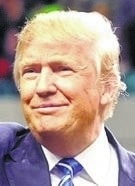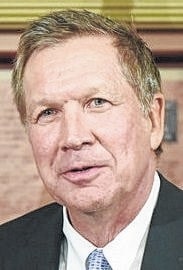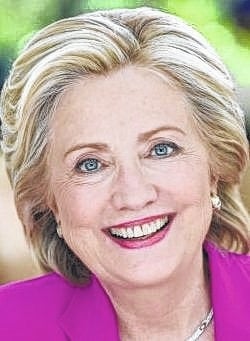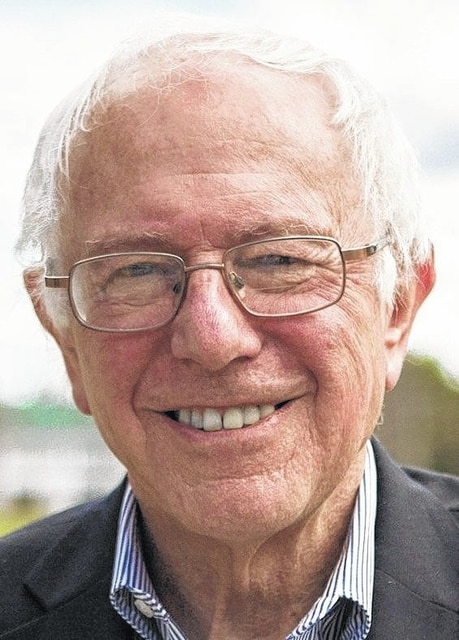



Nearly 1,100 ballots have already been cast or requested in Highland County in the 2016 primary election as of Wednesday evening, according to figures from the Highland County Board of Elections.
But some voters have expressed confusion over the Republican presidential ballot, which asks for two separate votes for the candidate of their choice.
Steve Witham, elections administrator, said that so far, ballots had been cast or requested by 774 Republicans, 294 Democrats, one member of the Green Party, and one nonpartisan voter. Voters who are neither Republicans nor Democrats can cast “issues only” ballots in primary elections.
Among Republicans, 409 have come in person to the board office to vote, and 365 have requested mailed ballots. Among Democrats, 145 have arrived in person, and 149 have requested mailed ballots.
Voters locally and across Ohio will weigh in Tuesday on races ranging from the presidential election to county contests to a number of local issues.
Locally, the only contested race on the ballot for a county office is between Republicans Barb Cole and Terry Britton, who are looking to win the GOP nomination for the county commission seat being vacated by the retirement of Tom Horst. Incumbent Republican Shane Wilkin is running uncontested for the other commission seat.
Democrat Tara Campbell, who is running unopposed in the primary, and unaffiliated candidate Alex Butler will be on the November ballot facing off against the winner of the primary race between Cole and Britton.
Republican incumbents who are running unopposed include prosecutor Anneka Collins, clerk of court Dwight “Ike” Hodson, sheriff Donnie Barrera, recorder Chad McConnaughey, treasurer Vicki Warnock, engineer Dean Otworth and coroner Jeff Beery. Democrats fielded no candidates for those races. Non-affiliated candidates have until 4 p.m. Monday to file for the November ballot.
Some voters around Highland County will be deciding issues, including a Brushcreek Township 1.0 mill five-year cemetery renewal tax, a Liberty Township additional 0.1 mill, five-year cemetery tax, a Marshall Township cemetery 0.25 mill, five-year replacement tax, and a local option for Sunday beer sales at a Flagway store in Leesburg.
Ohio is again the focus of national attention as the second “Super Tuesday” of the season rolls around, with voters preparing to turn out in Ohio, Florida, Illinois, Missouri and North Carolina to decide presidential favorites.
While Ohio technically holds a “closed” primary, others refer to it as “semi-open,” since any registered voter can show up and request a ballot from either party. By filling out a short form at the polls, Republicans can vote in the Democratic primary and Democrats can vote in the GOP primary. Doing so results in the voter being listed as a registered member of the party in which he or she casts their ballot. Unaffiliated voters can simply request the ballot of their choice and do not have to fill out a form.
GOP confusion
In Ohio presidential primaries, the candidates are listed by name, but voters are technically voting for delegates who represent the candidates. Even though only Donald Trump, John Kasich, Ted Cruz and Marco Rubio are still officially in the GOP race, the names of other candidates will still appear on Ohio ballots and their votes will be counted.
On the Republican side, presidential candidates appear twice on the primary ballot, but it’s the first appearance that will determine the winner. Voters first vote for “delegates-at-large and alternates-at-large” for their preferred candidate, and then are asked to vote again for “district delegates and district alternates” for the candidate of their choice. Witham said that’s because ballots were finalized before the Ohio GOP decided late last year to award all delegates to the winner of the state regardless of the margin of victory.
In previous primaries, a Republican presidential primary candidate had to win 51 percent of the vote to win all of Ohio’s delegates. If that threshold was not meant, delegates were awarded proportionally according to the winners of congressional districts, which is why district delegates mattered.
Now, though, whoever wins Ohio – regardless of the percentage of vote – will win all of Ohio’s delegates, making the district delegates irrelevant. So when the election results are calculated, the winner will be determined by the delegates-at-large results, which appear first on the ballot. However, Witham said the secretary of state’s office has ordered election officials to also tabulate the district delegate results, even though they will be irrelevant.
On the Democratic ballot, the names of the presidential candidates appear only once, as voters cast ballots for “delegates-at-large and alternates-at-large.”
Donald Trump is hoping to cement his status as the GOP frontrunner by winning Ohio and Florida. While polls show Trump dominating in Florida, they also show him in a tight race in the Buckeye State with Ohio Gov. John Kasich. Republican establishment forces are marshalling their efforts to find a way to derail Trump’s momentum.
Trump has performed better in states such as Ohio that have open or semi-open primaries, where he has attracted independent and Democratic voter support. But Kasich also has appealed to non-Republican voters.
On the Democratic side, frontrunner Hillary Clinton holds a strong delegate lead over rival Bernie Sanders, but Sanders’ upset win in Michigan on Tuesday has Clinton hoping for a strong showing March 15 to fend off her opponent’s momentum.
Contested races
Along with the presidential race and local contests, primary voters will be deciding nominating contests for U.S. Senate and 2nd District representative to Congress. In the Republican Senate race, incumbent Rob Portman is being challenged by Don Eckhart. Incumbent 2nd District Congressman Brad Wenstrup is facing a challenge from Jim Lewis.
There is a contested GOP Ohio Supreme Court race between Pat Fischer and Colleen Mary O’Toole. There are State Central Committee contests between Phil Bowman and James Rosendahl, and between Wendy Sizemore and Bonnie Ward.
On the Democratic ticket, Ted Strickland, P.J. Sittenfeld and Kelli Prather are vying for the right to take on the winner of the Portman-Eckhart race. Ronny Richards, William Smith and Russ Hurley are competing for the 2nd District congressional nomination. Valerie Gerlach and Paul Price are vying for a 4th District Court of Appeals seat.
Early voting began Feb. 17 and lasts through Monday. On Friday, election board office hours for in-person voting are from 8 a.m. to 7 p.m. On Saturday, the office will be open 8 a.m. to 4 p.m. On Sunday, it will be open 1 p.m. to 5 p.m. On Monday, it will be open 8 a.m. to 2 p.m.
On Election Day, Tuesday, the polls across the county will be open from 6:30 a.m. to 7:30 p.m.
Witham was conducting precinct election official training throughout the day Thursday.
Reach Gary Abernathy at 937-393-3456 or on Twitter @abernathygary.






